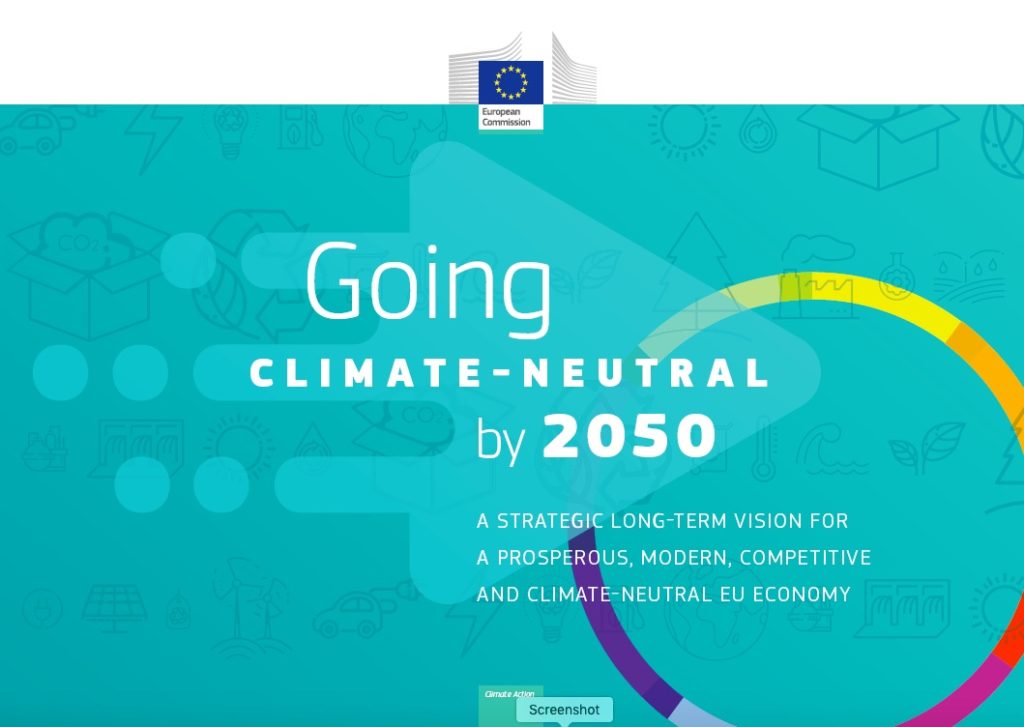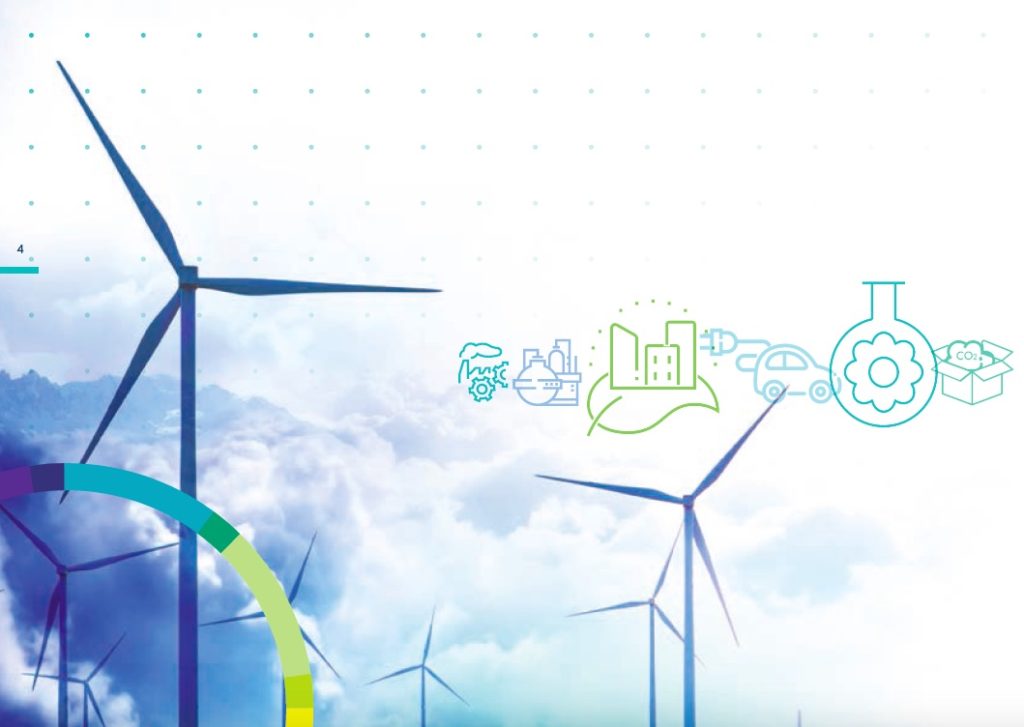Climate change is a reality
Climate change is a serious concern for Europeans.
According to an EU-wide survey published in September 2017, more than 9 in 10 EU citizens (92 %) consider climate change to be a serious problem. Note 1.
The last two decades have witnessed 18 of the warmest years on record, and an increase in the frequency and intensity of extreme weather events. In Europe, this has resulted for example in:
· extreme heatwaves in four of the last five years;
· temperatures 5 °C higher than usual above the Arctic Circle in the summer of 2018, leading to rapid loss of Arctic sea ice and negative impacts on Nordic biodiversity;
· severe drought in large parts of Europe;
· flood events, with Central and Eastern Europe particularly affected.
Climate-related extremes such as forest fires, flash floods, typhoons and hurricanes are causing mass devastation and loss of lives, as well as economic damage. In 2017, economic damage caused by weather-related disasters amounted to €283 billion globally. For instance, the droughts that occurred in several EU countries in 2018 had an impact on the production of arable crops and animal feed.
The planet is warming by 0.2°C per decade, according to a report by the Intergovernmental Panel on Climate Change (IPCC) published in October 2018. Global temperatures have already increased by 1°C and if we do not act now, the increase could reach 2 °C by 2060.
If this happens, the impacts of climate change will worsen worldwide. For example, 99% of coral reefs could disappear and the loss of the Greenland ice sheet could eventually lead to a seven-metre rise in sea levels, radically affecting coastal areas.
All of this will have severe consequences on both the European and global economy, infrastructure, food production, public health, biodiversity and political stability. It has been predicted, for example, that by 2100 the yearly damage from river floods in Europe could increase from €5 billion to €112 billion and that 16% of the present Mediterranean climate zone may become arid. Moreover, a reduction in food availability is more significant at a global warming of 2 °C than at 1.5 °C.
Only by limiting global temperature increase to 1.5°C could the world avoid some of the worst climate impacts and reduce the likelihood of extreme weather events. Immediate and decisive action on climate change is therefore necessary.
A vision for a climate-neutral Europe
In November 2018, the European Commission presented a long-term strategic vision to reduce greenhouse gas (GHG) emissions, showing how Europe can lead the way to climate neutrality – an economy with net-zero GHG emissions. Note 2.

The strategy explores how this can be achieved by looking at all the key economic sectors, including energy, transport, industry and agriculture. A portfolio of options was explored to underline that it is possible to move to net-zero GHG emissions by 2050, based on existing – though in some cases emerging – technological solutions, empowering citizens and aligning action in key areas such as industrial policy, finance or research, while ensuring social fairness for a just transition.
The European Commission’s vision outlines seven main strategic building blocks:
• maximise the benefits of energy efficiency, including zero emission buildings;
• maximise the deployment of renewables and the use of electricity to fully decarbonise Europe’s energy supply;
• embrace clean, safe and connected mobility;
• a competitive EU industry and the circular economy as a key enabler to reduce GHG emissions;
• develop an adequate smart network infrastructure and interconnections;
• reap the full benefits of bioeconomy and create essen-
tial carbon sinks;
• tackle remaining COemissions with Carbon Capture
and Storage (CCS).
Pursuing these building blocks, starting from the imple- mentation of the 2030 climate and energy framework, will allow the EU to move towards a prosperous climate-neutral economy.
The Commission’s strategic vision is a response to the Paris Agreement’s invitation to pursue efforts to keep global warming to 1.5°C compared to pre-industrial levels. It is also fully in line with the United Nations’ Sustainable Development Goals.
The EU is a global leader in the transition towards a more carbon efficient economy. Citizens and companies across all EU countries have already succeeded in lowering GHG emissions by 22%, while gross domestic product (GDP) increased by 58% between 1990 and 2017. The EU has demonstrated that it is possible to decouple emissions from economic growth and that climate action goes hand in hand with the development of new industries, jobs and technical innovations.
The EU is now broadly on track to meet its 2020 climate and energy targets and has finalised the regulatory framework to achieve its 2030 targets for further emissions reduction and the clean energy transition. Combined, these policies will enable the EU to deliver on its contribution under the Paris Agreement to reduce emissions by at least 40% by 2030, compared to 1990. Indeed, the new 2030 targets for energy efficiency and renewable energy should enable the EU to reduce its emissions by around 45%, if fully implemented.
However, more needs to be done. The Commission’s strategic vision outlines how a transition towards a climate-neutral economy could be realised by 2050.
How to achieve long-term temperature goals
The EU’s vision is based on a detailed analysis of eight pathways for a possible future EU economy.
These pathways:
· achieve GHG emissions reductions between 80 % and 100% compared to 1990, the latter representing a climate-neutral economy by 2050;
· build on ‘no regret’ policies like strong use of energy effi- ciency and renewable energy but varying the intensity of the application of electrification, hydrogen and e-fuels, as well as end-user energy efficiency and the role of the circular economy;
· show that a vibrant EU economy can be combined with ambitious climate policy targets, even with existing technologies.
The pathways are not a prediction of what the future holds, but instead show the plausibility of the EU’s climate policy ambitions.
Reducing greenhouse gas emissions
The first five pathways aim to achieve over 80% of GHG reductions by 2050 compared to 1990. The aim is to better understand what the available options to reduce emissions are and how they will transform the sectors in our economy in different ways.
The sixth pathway combines the cost-efficient GHG reduction opportunities from the first five pathways, achieving GHG reductions as high as 90%.
The seventh and eighth pathways assess how net-zero GHG emissions, i.e. climate-neutrality, can be achieved by 2050, thereby also looking at the role of net negative emissions to achieve zero greenhouse gas emissions by 2050.
The seventh pathway pushes zero-carbon energy carriers
and relies on COremoval technologies, namely bioenergy combined with CCS, to balance emissions.
The eighth pathway, by contrast, focuses more on the impact of a circular economy in a world in which customer choices become less carbon intensive. It has more scope to strengthen the land use sink and needs to rely less on CO removal technologies to balance out remaining emissions.
Achieving climate neutrality will rely on a combination of drivers in deploying all options to achieve this ambitious vision.

What’s next?
The European Commission’s long-term vision invites EU institutions, national parliaments, the business sector, non-governmental organisations, cities, communities and citizens, especially youth, to participate in an EU-wide debate shaping Europe’s future and ensuring the EU can continue to lead global efforts to fight climate change.
This EU-wide debate should allow the EU to adopt and submit an ambitious long-term strategy for reducing GHG emissions by early 2020 to the UN’s Framework Convention on Climate Change (UNFCCC) as requested under the Paris Agreement.
Note 1. Special Eurobarometer on climate change, September 2017.
Note 2. European Commission communication ‘A clean planet for all: strategic long-term vision for a prosperous, modern, competitive and climate-neutral economy
by 2050’ [COM (2018) 773 final].
The above Commentary is a summary of a Brochure on Going Climate Neutral by 2050: A Strategic Long-Term Vision for a Prosperous, Modern, Competitive and Climate Neutral EU Economy which was originally published by the European Commission at bit.ly/2SidoAr See the link for the full brochure.


No comments yet, add your own below